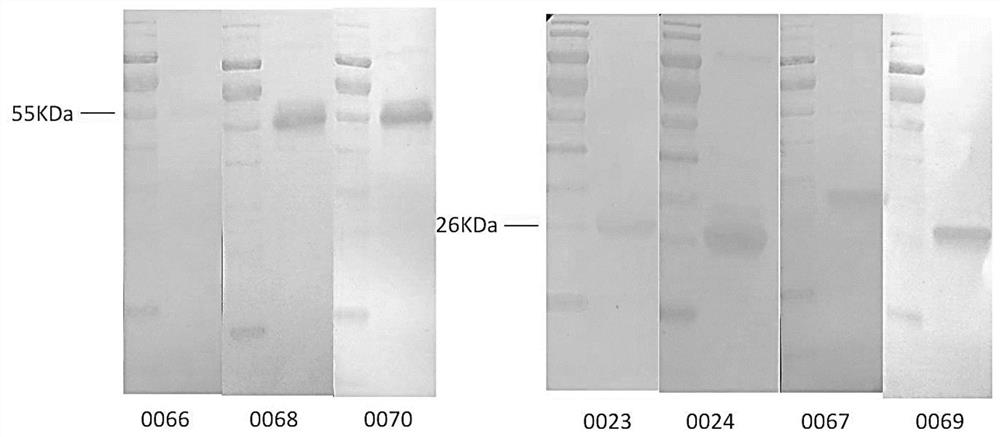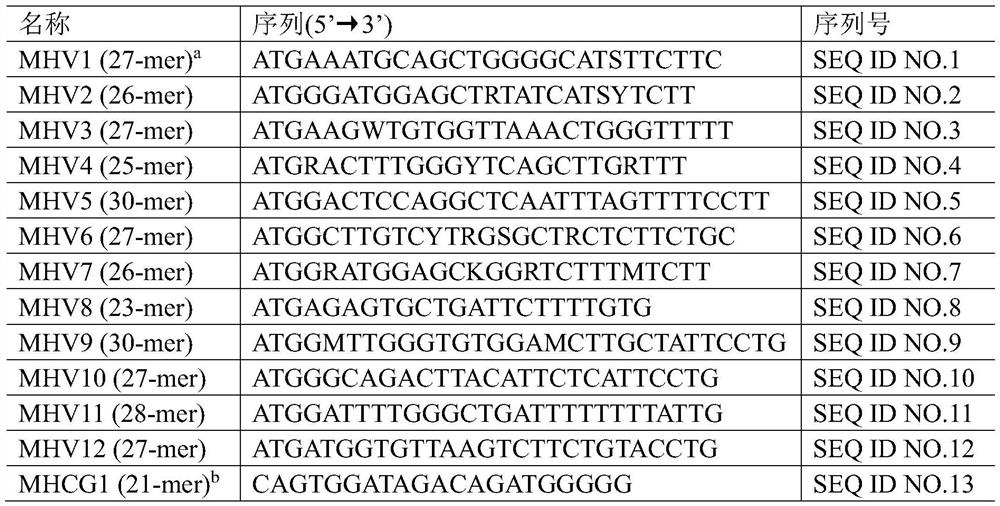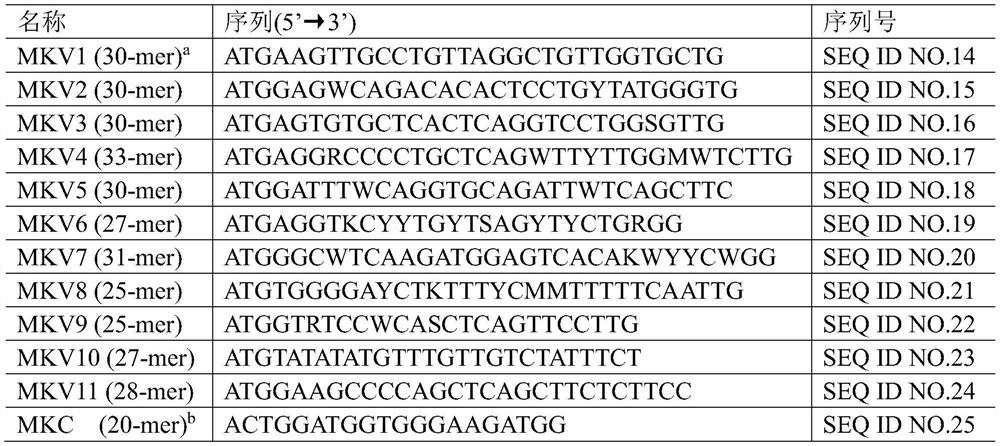Mouse anti-human IgG monoclonal antibody
A monoclonal antibody, a variable technology, applied in the field of cellular immunology and genetic engineering, which can solve the problems of high background, unclear immune background, false positives, etc.
- Summary
- Abstract
- Description
- Claims
- Application Information
AI Technical Summary
Problems solved by technology
Method used
Image
Examples
Embodiment 1
[0065] The preparation of embodiment 1 mouse anti-human IgG monoclonal antibody
[0066] 1. Immunization of Balb / c mice
[0067] The human IgG antibody obtained after human serum was purified by Protein G affinity chromatography column was dialyzed into PBS, and the concentration was measured. Human IgG was used to immunize 5-week-old female Balb / c mice (100 μg / mouse). In the first immunization, 100 μg antigen was mixed with an equal volume of Freund’s complete adjuvant and intraperitoneally injected; after the third week, an equal amount of antigen was mixed with Freund’s incomplete adjuvant. Intraperitoneal immunization after mixing the doses; the third immunization in the 5th week without adjuvant.
[0068] 2. Fusion of splenocytes and myeloma cells
[0069] One week before fusion, resuscitate mouse myeloma cells sp2 / 0 into OPTI-MEM medium (containing 10% fetal bovine serum) and place at 37°C, 5% CO 2 The cells were cultured in an incubator, and the cells were passaged o...
Embodiment 2
[0105] The application of embodiment 2 monoclonal antibody
[0106] 1. Detection of dengue virus (DENV) IgG antibody in humans
[0107] 1. After 1 μl of convalescent serum (14 parts in total) of type II dengue virus infection was mixed with 100 μl of sample diluent, it was added to a microtiter plate (coated with recombinant dengue virus serum type II NS1 antigen, 100ng / well), Set positive and negative controls at the same time, seal the microplate plate with a sealing film, and incubate in a 37°C incubator for 30 minutes.
[0108] 2. Take out the enzyme-labeled plate and place it on the plate washer, wash it with washing solution for 5 times, then shake off the residual liquid in the well or flip the enzyme-labeled reaction plate upside down and pat the residual liquid in the well on absorbent paper.
[0109] 3. Add 100 μl / well of 0070-HRP working solution to each well, and incubate in a 37°C incubator for 30 minutes.
[0110] 4. Repeat step 2.
[0111] 5. Mix the chromoge...
PUM
 Login to View More
Login to View More Abstract
Description
Claims
Application Information
 Login to View More
Login to View More - R&D
- Intellectual Property
- Life Sciences
- Materials
- Tech Scout
- Unparalleled Data Quality
- Higher Quality Content
- 60% Fewer Hallucinations
Browse by: Latest US Patents, China's latest patents, Technical Efficacy Thesaurus, Application Domain, Technology Topic, Popular Technical Reports.
© 2025 PatSnap. All rights reserved.Legal|Privacy policy|Modern Slavery Act Transparency Statement|Sitemap|About US| Contact US: help@patsnap.com



